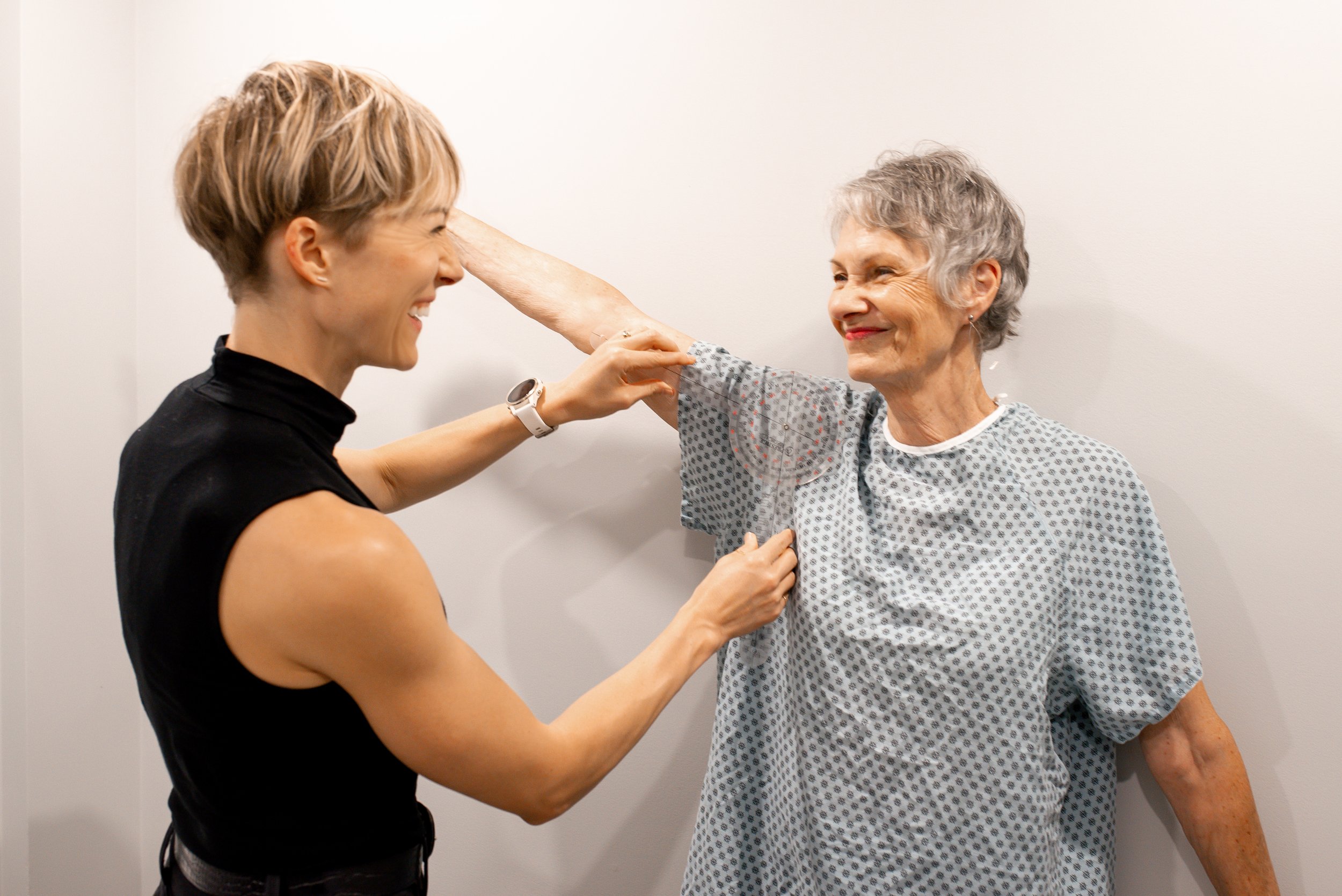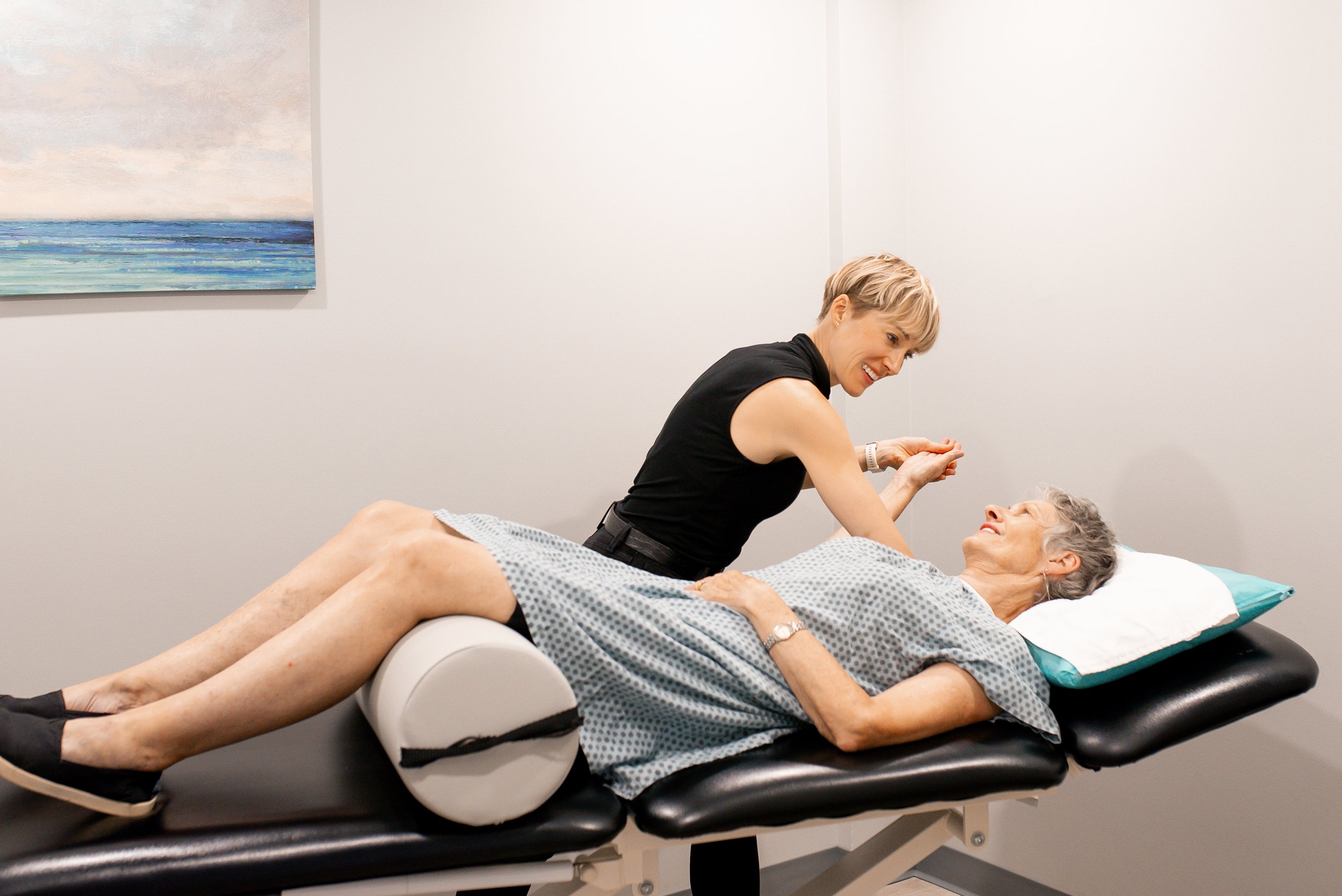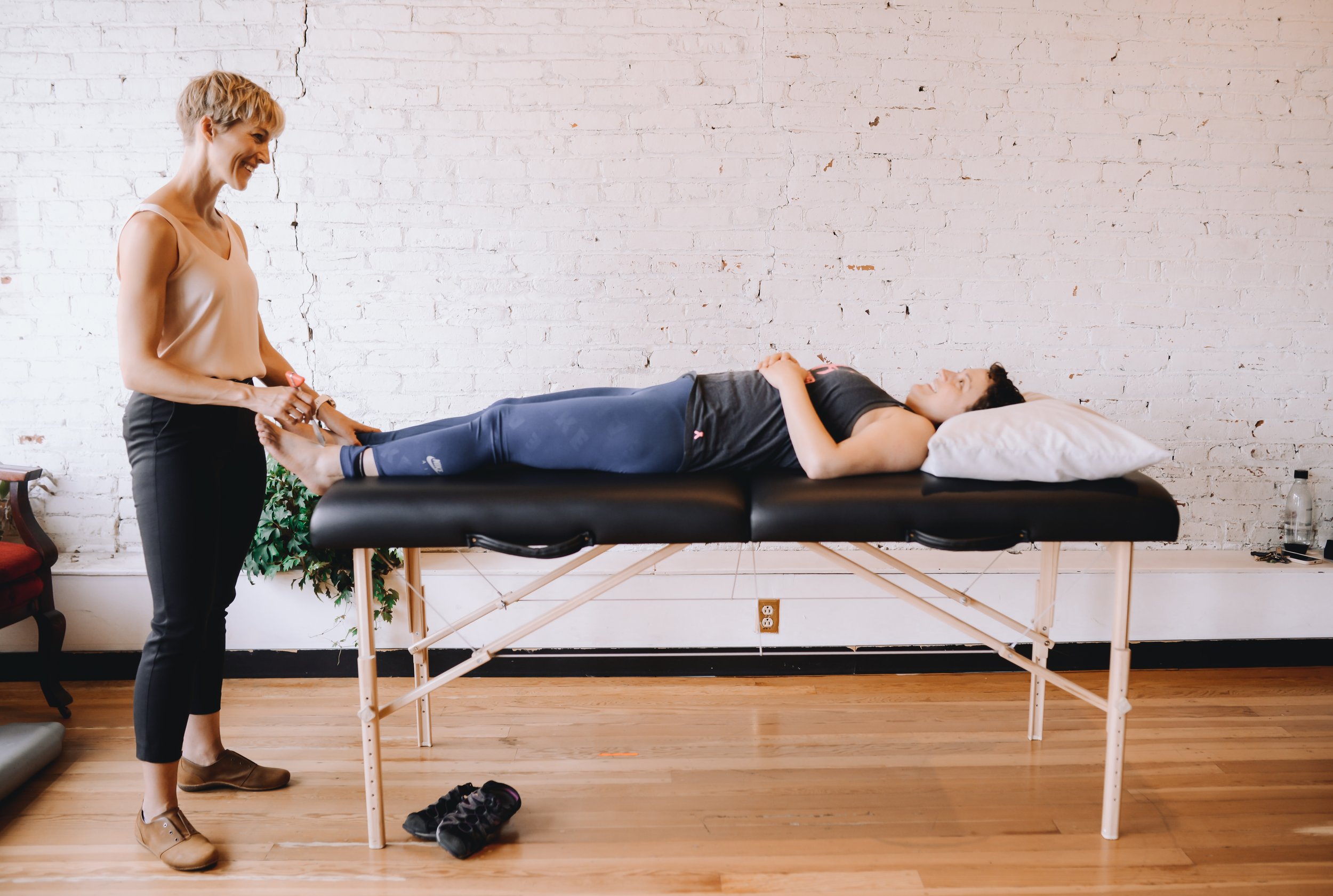Chemotherapy Induced Peripheral Neuropathies: Everything You Need to Know
Rehab Tools for Chemotherapy Induced Peripheral Neuropathies; Prevention and Management
Neuropathies are very common within the cancer population They can be a result of treatment such as radiation, surgery, or chemotherapy. They can occur in the vestibular nerve, radiation site, or most commonly induced in the in the hands and feet through chemotherapy. As chemotherapy is the most common cause of peripheral neuropathies, this blog will focus primarily on chemotherapy induced peripheral neuropathies (CIPN); how they occur, how to differentiate them from other neuropathies and tools to manage them.
Akin to my previous blog on managing hormone therapy,
I will highlight ‘young science’; tools that are low risk such as cold exposure.
If you’re looking for strong sweeping statements or recycled approaches, stop here. Science is always teaching us; as it evolves let us remain humble and curious. Let’s take a dive into the world of neuropathies.
Defining ‘Peripheral’
Our central nervous system includes our brain and spinal cord. The spinal cord is encapsulated by the spinal column hence the central system is less exposed to toxins as compared to the peripheral system. All of the components outside the brain and spinal cord are termed ‘peripheral’ and are more vulnerable to the effects of chemotherapy.
When nerves first pop out of the spine, they are called a nerve root; occasionally there are branching areas that bundle known as ‘plexuses’. One breast cancer related condition that involves a plexus is brachial plexopathy occurring in the chest area, post breast cancer treatment. Another example of a plexus is the cervical plexus found in the anterior neck; neck dissection surgeries may cause cervical plexopathy.
As cancer rehab physiotherapists, we often assess for plexopathies, palsies, and neuropathies when considering the type of cancer, the location of radiation and surgery, differentiating plexopathies and acute neuropathies from chemotherapy induced peripheral neuropathies (CIPN) and others.
As you can imagine if the main branching area of a tree has been impacted, many of the branches leaves further down will be impacted. Plexopathies and neuropathies can be misdiagnosed if the clinician isn’t taking into account your cancer treatment history.
Chemotherapy Induced Peripheral Neuropathies (CIPN) are Common in the Hands or Feet but Can Occur Elsewhere Too!
Neuropathy vs Chemotherapy Induced Peripheral Neuropathy
The peripheral system includes your autonomic nervous system, working in the background with little conscious thought. It controls many functions such as breathing, blood pressure, bladder/bowel and digestion. This is important as chemotherapy induced change can impact more than just the hands and feet.
Changes in your bladder and bowel and/or digestion that arise during chemo treatment are classified as chemotherapy induced peripheral neuropathies. Think of the peripheral system as a messenger and a relay, always picking up signals and changing accordingly.
Changes in dizziness or gaze stability are also signs of chemotherapy induced peripheral neuropathies; particularly chemotherapy induced vestibular neuropathy.
Any dysfunction within the peripheral system may be considered a peripheral neuropathy. Peripheral nerves can get jangly, impacting gaze, bowel health, pain, sensation or muscle health.
There are 3 Forms of Nerve Injury: Cut, Press and Stretch.
While in surgery, a direct cut to a nerve’s core is known as peri-operative ‘neurotmesis’. Neurotmesis is irreversible and therefore not considered a neuropathy. Radical neck dissections associated with head and neck cancers may involve neurotmesis of the spinal accessory nerve leading to spinal accessory nerve palsy. A head and neck cancer related rehab plan is paramount in assuring healthy post-op functioning of the shoulder and neck.
Within the breast cancer population post mastectomy, neurotmesis of the long thoracic nerve may occur, known as long thoracic nerve palsy. It too can result in shoulder dysfunction and impaired muscle control and require rehab support.
Another form of nerve injury known as ‘neuropraxia’ can occur through compression of nerves within adhesions of healing tissues or tight interfaces. Nerves need to slide and glide with ease, when they get sticky within a healing wound this can results in symptoms.
Neuropraxia can occur due to wound healing is typically only in one limp close to the side of the wound and symptomatic with limp movement This helps physiotherapists to differentiate it from chemotherapy related neuropathies. Chemotherapy induced peripheral neuropathies occur in both hands or both feet, effecting primarily sensory nerves only.
The 3rd type of nerve injury is ‘axonotmesis’; this occurs when only the sheath of the nerve is impacted as opposed to the core. Axonotmesis can occur when nerves are being stretched a side during surgery. Often it takes time for the nerves to settle but they will come back to normal.
It’s important to understand the surgical report and which nerves may have been injured and to what degree.
2 years is often the time required to reach a new normal. Compressed and stretched nerves can take their sweet time to settle; while permanent numbness on the scar line and area can remain.
If you are concerned about your nerve symptoms, a neuropathy assessment is included in the a cancer rehab initial assessment and may provide some answers.
Understanding the Surgical and Treatment History Matter.
Breast cancer related neuropathies can occur. Specifically the intercostal, medial and lateral pectoral, thoracodorsal, and long thoracic nerves can be impacted (Chappell et al. 2020). Injured by traction or compression, the damage is often reversible.
Within the breast cancer population, peripheral neuropathies are often generalized into post-mastectomy pain syndrome (PMPS). Radical mastectomies and axillary lymph node dissections (ALND), and radiation are the most common cause for nerve like symptoms within PMPS (Chappell et al. 2020).
It’s important to differentiate peripheral neuropathies from chemotherapy induced neuropathies; understanding the breast cancer surgical history and treatment history matter. A breast cancer physio assessment can help provide the correct diagnosis and prognosis.
Assessment + Diagnosis =
Effective Rehab Plan.
Why do Chemotherapy Induced Peripheral Neuropathies occur?
Despite all cancer treatments potentially impacting your peripheral nervous system, chemotherapy is the most common. Chemotherapy is classified as cytotoxic and at times cardio-toxic. Cytotoxic drugs of the following are known to have potential effects on your peripheral nervous system:
TYPES OF CHEMOTHERAPY:
Taxanes
Plantinums
Vinca Alkaloids
Targeted Therapies
In 2020, a systematic review pulled 257 references within CIPN research (Loprinzi et al. 2020) and found that oxaliplatin and paclitaxel were the most prominent in causing insult to the peripheral system. Often the symptoms peak 2-3 days post chemotherapy infusion; an effect known as Nadir and can worsen over the course of treatment.
Symptoms associated with Oxaliplatin typically present in the upper extremities and have a cumulative effect intensifying with each cycle. Paclitaxel otherwise known as Taxol, often first presents as pain and typically impacts the lower extremities (Loprinzi et al. 2020). Paclitaxel associated symptoms don’t tend to accumulate but stabilize or even decrease between cycles.
The chemotherapy class of vinka alkaloids, in addition to the commonly used Cisplatin, are known to have more of an impact on the vestibular system, presenting as dizziness, instability, vertigo or gaze instability.
Now the hard science, if you want…
Injury to the peripheral nerves is due to a change in intra-cellular transport. Different classes of cytotoxic medications effect various cellular components such as the myelin coating of the nerve, the mitochondria powerhouse, the transport microtubules or dorsal root ganglia. In other words, the transportation of goods down the nerve’s core known as an axon is altered leading to alterations at the very end of the chain.
Imagine a tree with healthy roots but with yellowing leaves…
Peripheral neuropathies are often experienced in the fingertips or ends of the feet; this is the last part of the branching system where leftover nutrients finally get to. If a CIPN worsens, typically the symptoms move closer to the body, moving up the limbs.
Neurotoxic insult via chemotherapy most commonly impacts sensory nerves but can impact other types too. Sensory nerves tell us where we are in space (joint position sense) and detect cues from our physical environment. Common symptoms are numbness, tingling and pain (Loprinzi et al. 2020). However, other nerve types may be impacted such as autonomic and motor nerves.
-
Weakness and/or shakiness
Muscle wasting and/or cramping
Difficulty walking
-
Altered sensations of pain (numbness or hypersensitivity)
Trunk or hip pain ~3 days post chemotherapy injection
Altered perceptions of temperature, vibration, or touch
Electrical, burning or shooting sensations
Numbness, tingling, or itchiness
-
Constipation or diarrhea
Bladder incontinence
Dizziness
Blood pressure changes
Tools to Better Manage Chemotherapy Induced Peripheral Neuropathies?
#1) Rehab Tool: SPEAK UP
Pre-existing conditions may put you at higher risk. Patients are at a greater risk of CIPN onset if they have had other neuropathies prior to their diagnosis or have a family history of neuropathies. Additional risk factors are age, obesity, diabetes, and previous lymph node removal. Discuss your health history with your oncologist to understand your risk stratification for CIPN.
Knowing that oxaliplatin and paclitaxel chemotherapies are correlated with a higher probability of CIPN, take the time to discuss all of the chemotherapy options. If you have pre-existing neuropathies consider a neuropathy assessment to track any concerns moving forward with treatment. This will allow for an effective diagnosis of CIPN, differentiating it from any pre-existing neuropathies.
Dose Delay May be an Option, if Tingling Symptoms are Worsening.
Those with cancer are often in survival mode; symptoms are typically pushed to the wayside to prioritize treatment. In the case of neuropathies, the changes can be permanent, impacting your long term quality of life.
If nerve symptoms are occurring, speak to your oncologist right away. The risk of CIPN can be assessed by examining your personalized treatment and cancer profile. There are options. You can discuss medications that are less known to cause CIPN or your oncologist may consider changing the chemotherapy dose and schedule.
#2) Rehab Tool: Optimize Your SAFETY
If you have developed CIPN in either your hands or feet, here are some tips to stay safe:
Prevent accidental burns by using oven mitts when handling hot plates.
Check the temperature of your hot water tank at home, keep it less than 40 degrees Celsius.
If you feeling unsteady or tripping on your feet, consider a mobility assessment through a cancer physiotherapist; the prescription of a walker or cane may be helpful.
If needed consider using handrails on the stairs, grab bars in the shower, mats in the tub and assure there isn’t tripping hazards such as loose rugs or clutter around your home
If you can’t feel the gas pedal and brake pressure through your shoe, consider a cancer physiotherapy assessment to assess if you’re safe to drive
When doing dishes, wear rubber gloves as it provides a better grip and protects your hands from cuts
Keep your house well-lit inside and out.
#3) Rehab Tool: COLD PLUNGE
What do the studies say about this tool of getting cold and uncomfortable?
The American Society of Clinical Oncology 2020 guidelines for the management and prevention of CIPN was created through a systematic review of 48 RCT’s studies. Almost all investigated interventions such as micro-nutrients, supplements, drugs and non drug interventions were deemed as ineffective; a side from the drug Cymbalta/Duloxetine. Drug free interventions that needed more science were mentioned; in my opinion the low risk interventions are worth mentioning. Cold therapy was one of them.
The cold exposure and CIPN studies started in 2013 with Danish investigators noting that patients who received distal-extremity cryotherapy in the form of frozen mitts had reductions of Docetaxel induced neuropathies by approximately 50% (Eckhoff L et al. 2013).
Further studies continued including one larger unblinded RCT of 180 patients treated with oxaliplatin and/or docetaxel or paclitaxel who were assigned frozen mitts to wear during chemotherapy infusions. This study showed improvements in quality of life and reductions in neuropathy related symptoms. Excitingly, the research group has moved onto phase 3 trials (Beijers AJM 2020).
Currently at the BC Cancer Agency, depending on cancer/chemotherapy type, patients are being offered frozen mitts while undergoing chemotherapy infusions.
We understand thus far that cold exposure supports a large dopamine release which helps mental well-being and feelings of motivation. In addition, it supports the activation of brown fat contributing to a metabolic boost. Lastly, repeated cold exposure over long periods of time can have an anti-inflammatory impact effecting levels of interleukin-6 a pro-inflammatory cytokine that contributes to chronic inflammation.
COLD PLUNGING may Help Reduce CIPN Onset and Intensity
Within this blog, the intervention of ‘cryotherapy’ or frozen mitts will be broadened to include all forms of cold exposure as the physiological response is similar. Let’s keep cold exposure accessible and personalized to you. Health history, finances and environment all determine the tool that is right for you.
Cold exposure can include a cold bath, cold shower, cold body of water in nature or the use of cryotherapy equipment. At times patients may opt to use wet suit gloves, booties or a thin wet suit to start. Although some methods are more effective such as full emersion in comparison to a cool shower, regardless of the type of exposure, physiologically blood is moving out of the hands similar to the frozen mitts, shunting out of the periphery and into the core.
In my last blog on managing hormone therapies in breast cancer, I highlighted our cold plunge protocol to control nausea and combat feeling flatlined. Our cold plunge protocol may help to prevent and manage chemotherapy induced peripheral neuropathies while undergoing chemotherapy.
Try Using Cold Plunging To Prevent and Manage Neuropathies
How to Get Started Safely…
One should start slowly, building into colder temperatures over time. Jumping off of a dock and racing out in panic isn’t recommended or effective. It’s best to slowly adapt your body to the cold shock and practice your breathing.
The cold is always uncomfortable; that is how we know it’s working. Starting slowly allows you to train yourself to focus on your breath as oppose to holding your breath, or running out of the cold exposure. This means either starting with cool temperatures as opposed to cold and staying exposed longer. In addition, try decreasing the temperature over a 3 weeks time span. Another strategy would be to be to gradually enter into the cold water, over a 2-3 min time period.
The goal is to focus on your breathing rate; aim to slow it down and make your exhales longer.
Trust the process, in time the panic and discomfort will pass, and your body will settle into the cold, this can take up to 3 minutes or more at times. It’s beneficial to leave the water feeling somewhat calm, promoting vagal stimulation as oppose to a state of panic. This may take time to achieve; the point is don’t rush in and out in panic.
On a more personal note, I have been emerging into the discomfort of cold since 2019 and it has helped me innumerably.
The Cold Plunge Protocol Should Include:
1) When possible, cold exposure from the neck down
2) 11 minutes total/wk (each exposure should be at least ~3 min in length leaving in a state of some calm)
3) A temperature that is uncomfortably cold such that you’d like to escape it. (Can decrease temperature over time as stated above.)
When Using Cold Exposure Focus On Your Breathing Allowing the Panic to Pass
#4) Rehab Tool: EXERCISE AS MEDICINE...
I have mentioned the benefits of exercise in cancer in previous blogs. Following the SAFE exercise guidelines below can allow you to do so confidently in any stage of treatment, especially when undergoing chemotherapy.
In one study with over 350 patients having neuropathy symptoms, a 6 week home exercise program while undergoing chemotherapy treatment was shown to reduce symptoms (Zimmer et al. 2018). The national cancer institute has since started a randomized cooperative oncology group to trial exercise as an intervention to better manage CIPN. As chemotherapy is often riddled with fatigue, consider aligning yourself with a cancer physiotherapist throughout your chemotherapy to receive a personalized rehab plan.
Exercise can also increase neural energy, meaning it can effect memory, attention and learning as per the amazing work of Dr. Wendy Suzuki Dean of New York University. Although it is an extrapolation, if exercise can create neuro-plasticity impacting learning and attention, maybe it can also impact nerve health preventing CIPN onset, right?
Exercise may help manage the side-effects of Chemotherapy such as the risk of CIPN
By having a rehab plan personalized to you whether it’s prevention or management, adaptations can occur and rehab tools can work.
Once again I hope this leaves you with some tools and more importantly curiosity. With curiosity comes openness; and with openness comes possibility.
As always, thank you for your interest in science and rehab.
Kindly, The Cancer Physio
References
Beijers AJM, Bonhof CS, Mols F, et al: Multicenter randomized controlled trial to evaluate the efficacy and tolerability of frozen gloves for the prevention of chemotherapy-induced peripheral neuropathy. Ann Oncol 31:131-136, 2020
Chappell, A. G., Bai, J., Yuksel, S., & Ellis, M. F. (2020). Post-Mastectomy Pain Syndrome: Defining Perioperative Etiologies to Guide New Methods of Prevention for Plastic Surgeons. World journal of plastic surgery, 9(3), 247–253. https://doi.org/10.29252/wjps.9.3.247
Courneya KS, McKenzie DC, Mackey JR, et al: Subgroup effects in a randomised trial of different types and doses of exercise during breast cancer chemotherapy. Br J Cancer 111:1718-1725, 2014
Eckhoff L, Knoop AS, Jensen MB, et al: Risk of docetaxel-induced peripheral neuropathy among 1,725 Danish patients with early stage breast cancer. Breast Cancer Res Treat 142:109-118, 2013
Loprinzi, C. L., Lacchetti, C., Bleeker, J., Cavaletti, G., Chauhan, C., Hertz, D. L., . . . Hershman, D. L. (2020). Prevention and management of chemotherapy-induced peripheral neuropathy in survivors of adult cancers: ASCO guideline update. Journal of Clinical Oncology, 38(28), 3325-3348. doi:10.1200/jco.20.01399
Ruddy KJ, Le-Rademacher J, Lacouture ME, et al: Randomized controlled trial of cryotherapy to prevent paclitaxel-induced peripheral neuropathy (RU221511I); an ACCRU trial. Breast 48:89-97, 2019
Zimmer P, Trebing S, Timmers-Trebing U, et al: Eight-week, multimodal exercise counteracts a progress of chemotherapy-induced peripheral neuropathy and improves balance and strength in metastasized colorectal cancer patients: A randomized controlled trial. Support Care Cancer 26:615-624, 2018















